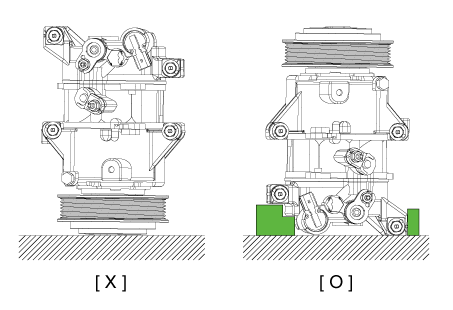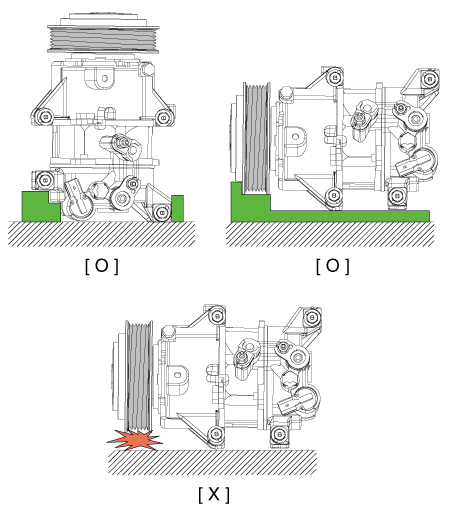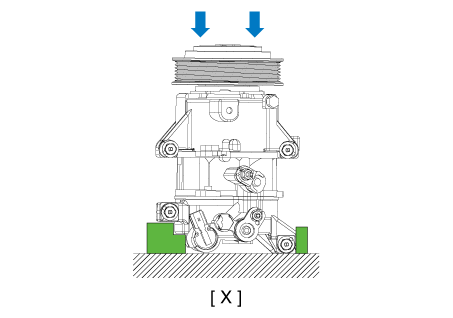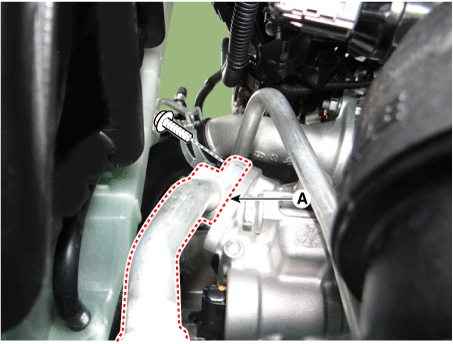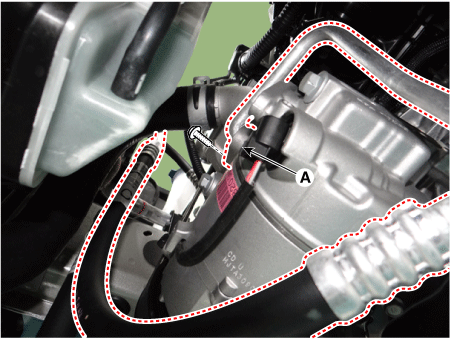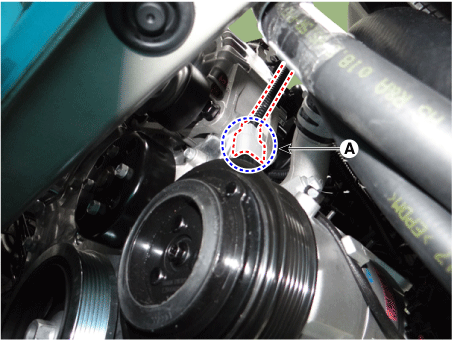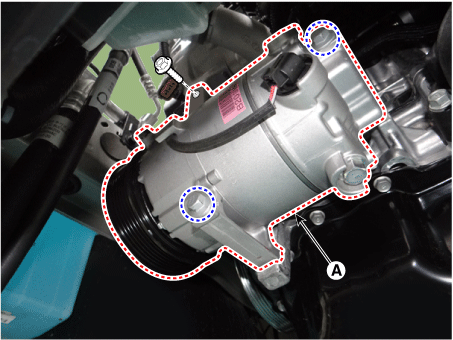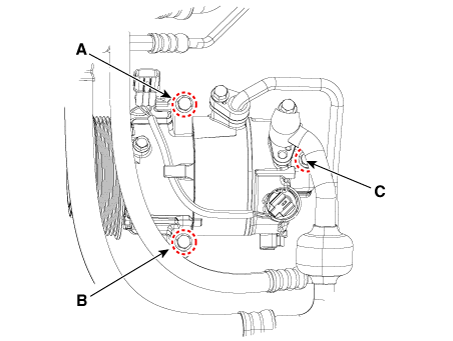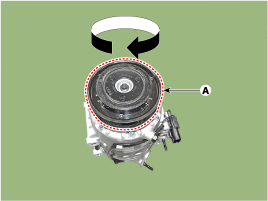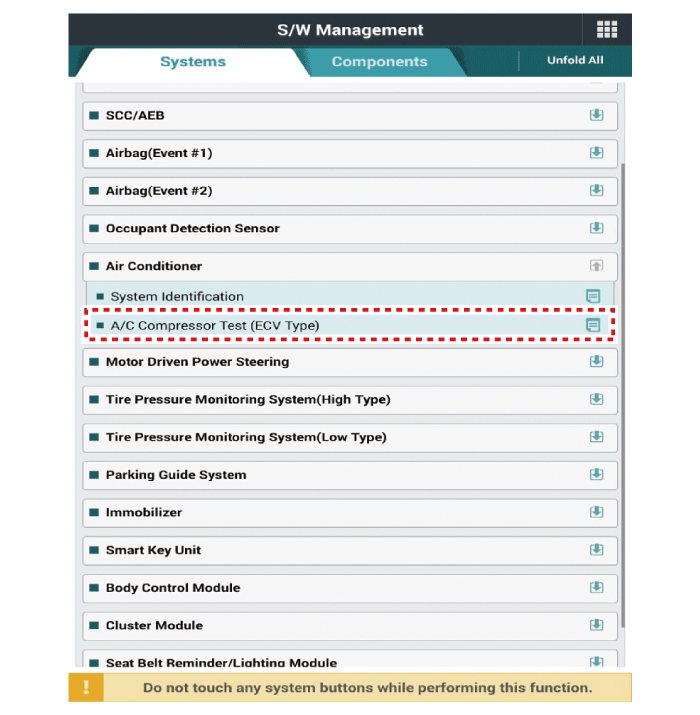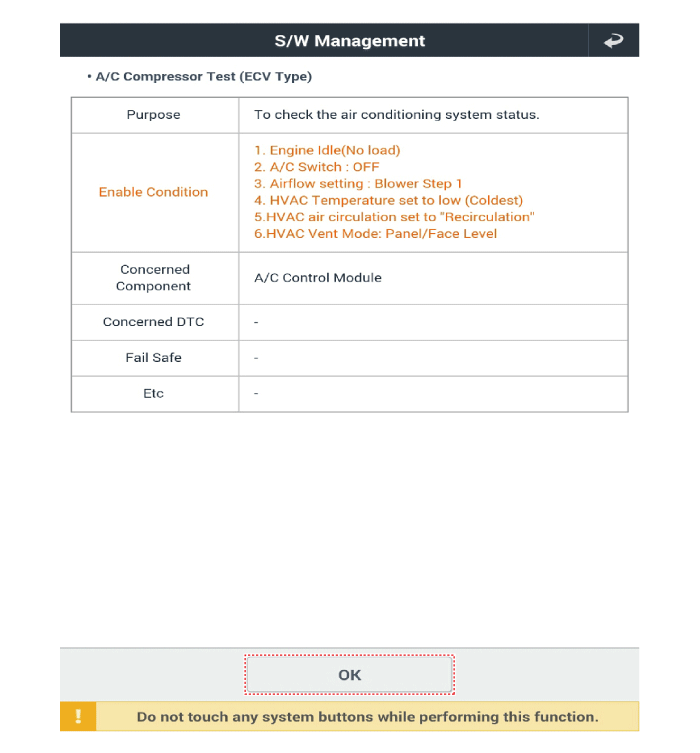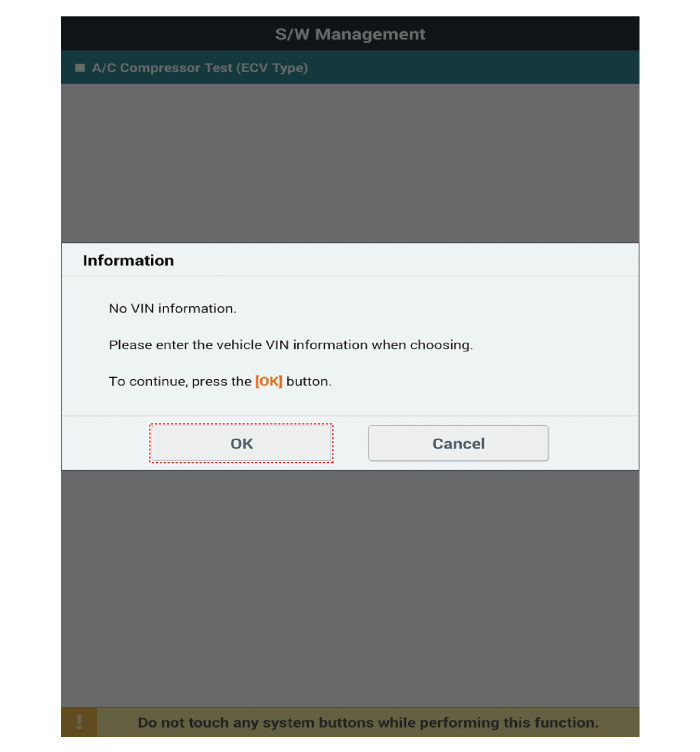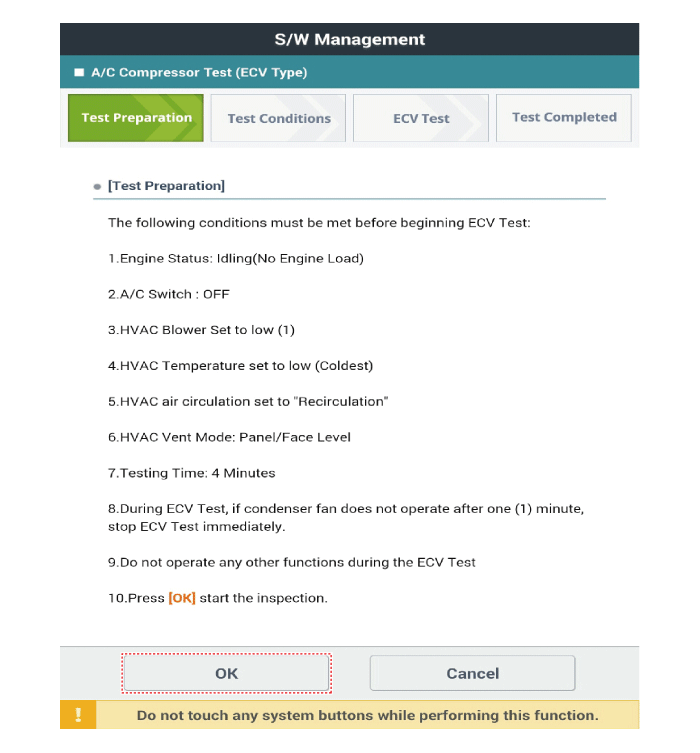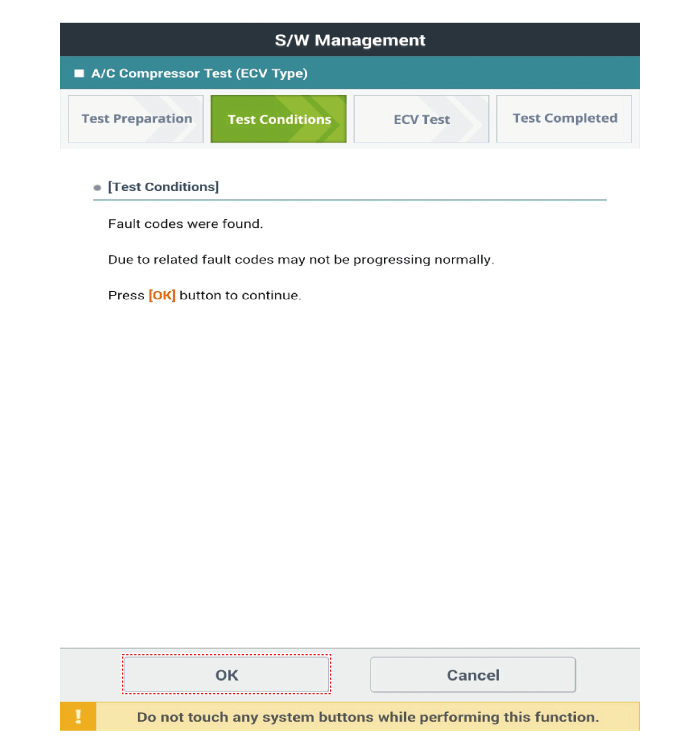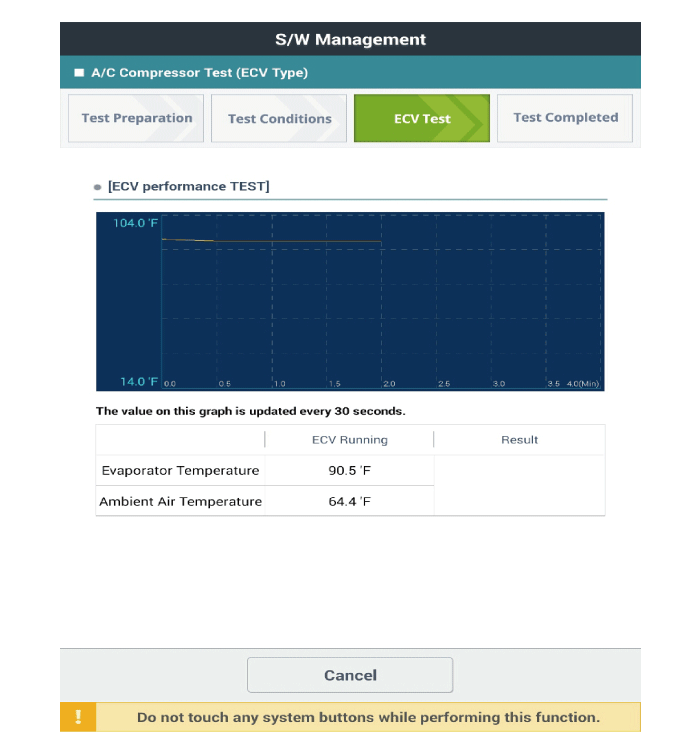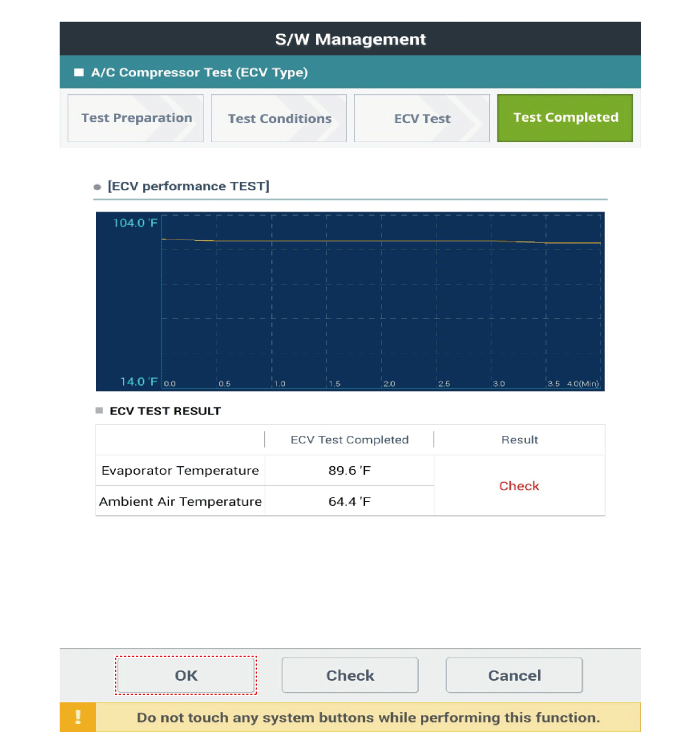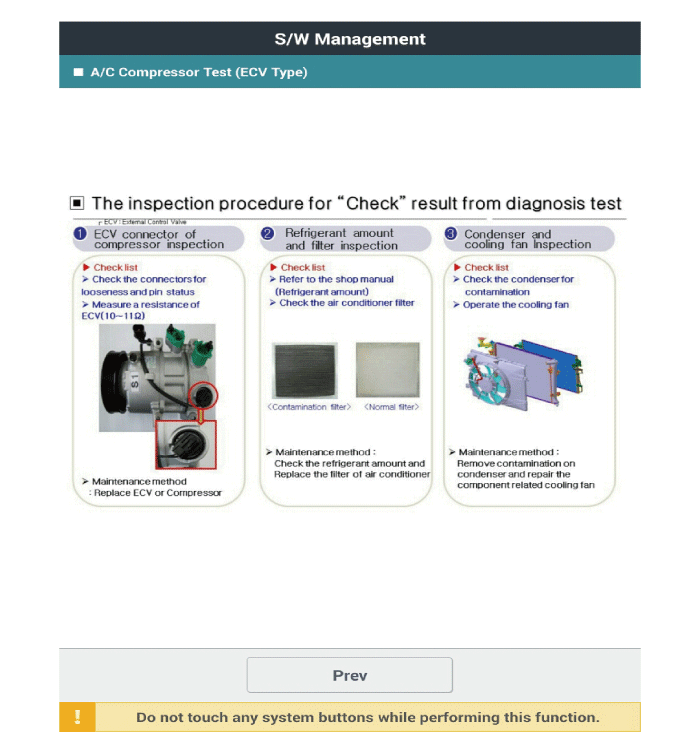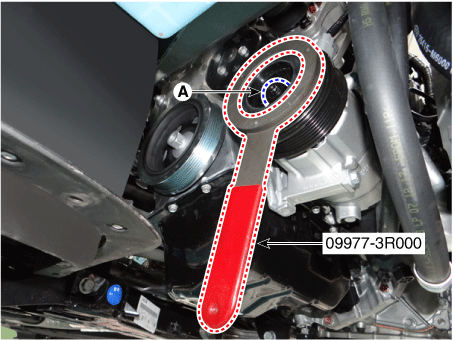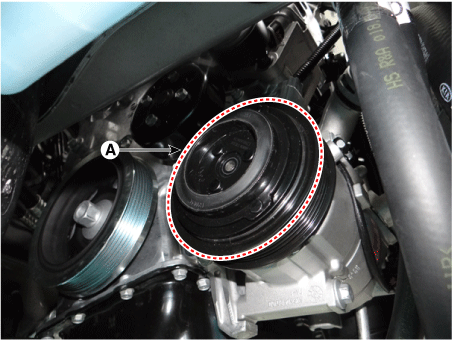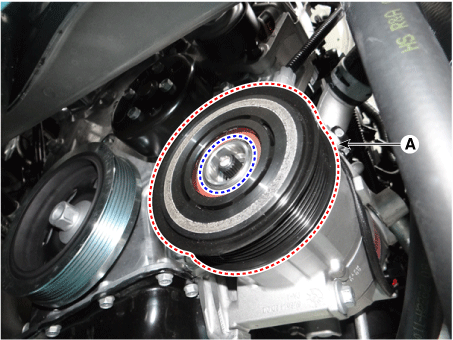Kia Forte: Air Conditioning System / Compressor
Description and operation
| Description |
The compressor is the power unit of the A/C system.
It is located on the side of engine block and driven by a V-belt of the engine.
The compressor changes low pressure and low temperature refrigerant gas into high pressure and high temperature refrigerant gas.
Variable Swash Plate Compressor
The compressor has a swash plate that rotates to reciprocate pistons, which compress refrigerant.
The variable swash plate compressor controls the swash plate angle to change the refrigerant displacement. It achieves precise cooling capability control in accordance with vehicle interior and driving conditions.
The externally controlled variable swash plate compressor changes the swash plate angle by an ECV (Electric Control Valve) in accordance with an electrical signal from the heater & A/C control unit.
This enables stable temperature control and improved driving sensation.
ECV Control Diagram
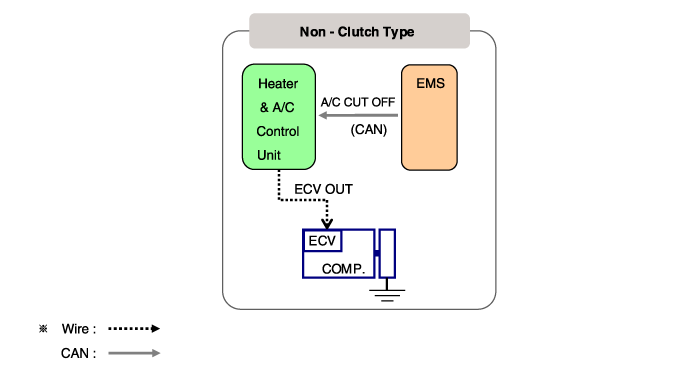
Components and components location
| Components |
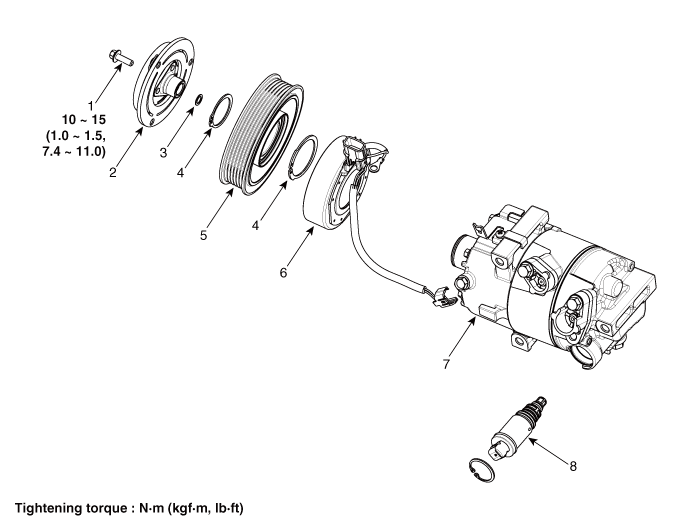
| 1. Clutch bolt 2. Limiter & Hub Assembly 3. Compressor spacer 4. Snap ring |
5. Pulley 6. Field coil assembly 7. Compressor assembly 8. Electric control valve (ECV) |
Repair procedures
| Removal |
Precautions for using the plastic pulley
|
| 1. |
If the compressor is marginally operable, run the engine at idle speed, and let the air conditioning work for a few minutes, then shut the engine off. |
| 2. |
Disconnect the negative (-) battery terminal. |
| 3. |
Recover the refrigerant with a recovery / charging station. |
| 4. |
Remove the engine room under cover. G 2.0 MPI NU (Refer to Engine Mechanical System - "Engine Room Under Cover") G 1.6 MPI GAMMA (Refer to Engine Mechanical System - "Engine Room Under Cover") D 1.6 TCI-NEW U (Refer to Engine Mechanical System - "Engine Room Under Cover") G 1.6 T-GDI GAMMA (Refer to Engine Mechanical System - "Engine Room Under Cover") |
| 5. |
Loosen the drive belt. G 2.0 MPI NU (Refer to Engine Mechanical System - "Drive Belt") G 1.6 MPI GAMMA (Refer to Engine Mechanical System - "Drive Belt") D 1.6 TCI-NEW U (Refer to Engine Mechanical System - "Drive Belt") G 1.6 T-GDI GAMMA (Refer to Engine Mechanical System - "Drive Belt") |
| 6. |
Remove the bolts, then disconnect the discharge line (A) from the compressor.
|
| 7. |
Remove the bolts, then disconnect the suction line (A) from the compressor.
|
| 8. |
Disconnect the compressor switch connector (A).
|
| 9. |
Remove the compressor (A) by loosening the mounting bolts.
|
| Installation |
| 1. |
Make sure the compressor mounting bolt with the correct length is screwed in. Tighten the mounting bolts with the specified tightening order.
|
| 2. |
To install, reverse the removal procedure.
|
| Inspection |
| 1. |
Check the plated parts of the limiter & hub assembly for color changes, peeling or other damage. If there is damage, replace the assembly. |
| 2. |
Check the pulley (A) bearing play and drag by rotating the pulley by hand. Replace the pulley with a new one if it is noisy or has excessive play / drag.
|
| External Control Valve Compressor Inspection (KDS) |
Compressor type: Fixed type compressor, External control valve, Internal control valve.
In cases of fixed type and internal control valve, it is possible to inspect compressor's operation with clutch noise.
When it comes to External control valve, however, it cannot be checked in this way bacause it doesn't have a clutch.
So, ECV should be inspected with KDS as below.
| 1. |
Connect KDS to the vehicle and select 'Aircon Compressor Test(ECV type)' [ECV1]
|
| 2. |
Make the vehicle ready as the KDS instruction on the monitor. (Turn off A/C 'switch' only)
|
| 3. |
Check if other DTC codes are found before inspect ECV compressor. If so, solve that problems first. If not, press 'OK' button to continue.
|
| 4. |
Start inspection
|
| 5. |
Check the result of inspection. [ECV7]
[ECV8]
|
| 6. |
If the result shows "Check" , click "Check" and follow the instruction.
|
| 7. |
Inspect ECV again from the first step. |
| Disassembly |
| 1. |
Remove the engine room under cover. G 2.0 MPI NU (Refer to Engine Mechanical System - "Engine Room Under Cover") G 1.6 MPI GAMMA (Refer to Engine Mechanical System - "Engine Room Under Cover") D 1.6 TCI-NEW U (Refer to Engine Mechanical System - "Engine Room Under Cover") G 1.6 T-GDI GAMMA (Refer to Engine Mechanical System - "Engine Room Under Cover") |
| 2. |
Loosen the drive belt. G 2.0 MPI NU (Refer to Engine Mechanical System - "Drive Belt") G 1.6 MPI GAMMA (Refer to Engine Mechanical System - "Drive Belt") D 1.6 TCI-NEW U (Refer to Engine Mechanical System - "Drive Belt") G 1.6 T-GDI GAMMA (Refer to Engine Mechanical System - "Drive Belt") |
| 3. |
Remove the clutch bolt while holding the pulley with a clutch bolt remover (09977-3R000).
|
| 4. |
Loossen the limiter bolts and then remove the limiter & hub assembly (A).
|
| 5. |
Remove the pulley (A) after removing the snap ring with a snap ring plier.
|
| 6. |
Reassemble in the reverse order of disassembly.
|
 Refrigerant Line
Refrigerant Line
Components and components location
Components Location
1. Suction & Liquid tube assembly
2. Discharge hose
Repair procedures
Removal
...
 Condenser
Condenser
Components and components location
Components Location
1. Condenser
Repair procedures
Inspection
1.
Check the condenser fins ...
Other information:
Kia Forte 2019-2025 (BD) Service Manual: Starting System
Description and operation Description The starting system includes the battery, starter, solenoid switch, ignition switch, inhibitor switch (A/T), clutch pedal switch (M/T), ignition lock switch, connection wires and the battery cable. When the ignition key is turned to the start ...
Kia Forte 2019-2025 (BD) Owners Manual: MAX A/C selection
The MAX A/C mode is used to cool the inside of the vehicle faster. Air flow is directed toward the upper body and face. In this mode, the air conditioning and the recirculated air position will be selected automatically. ■ Type A ■ Type B Instrument panel vents - Type A Th ...


